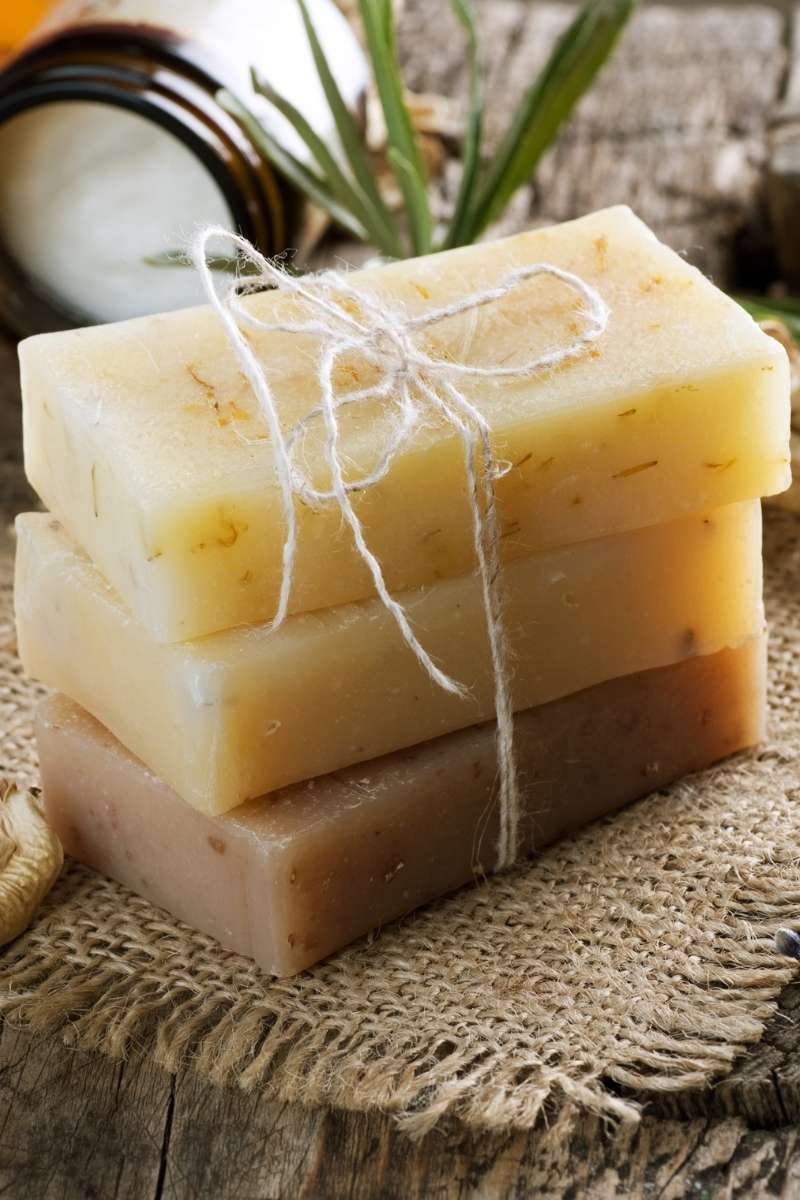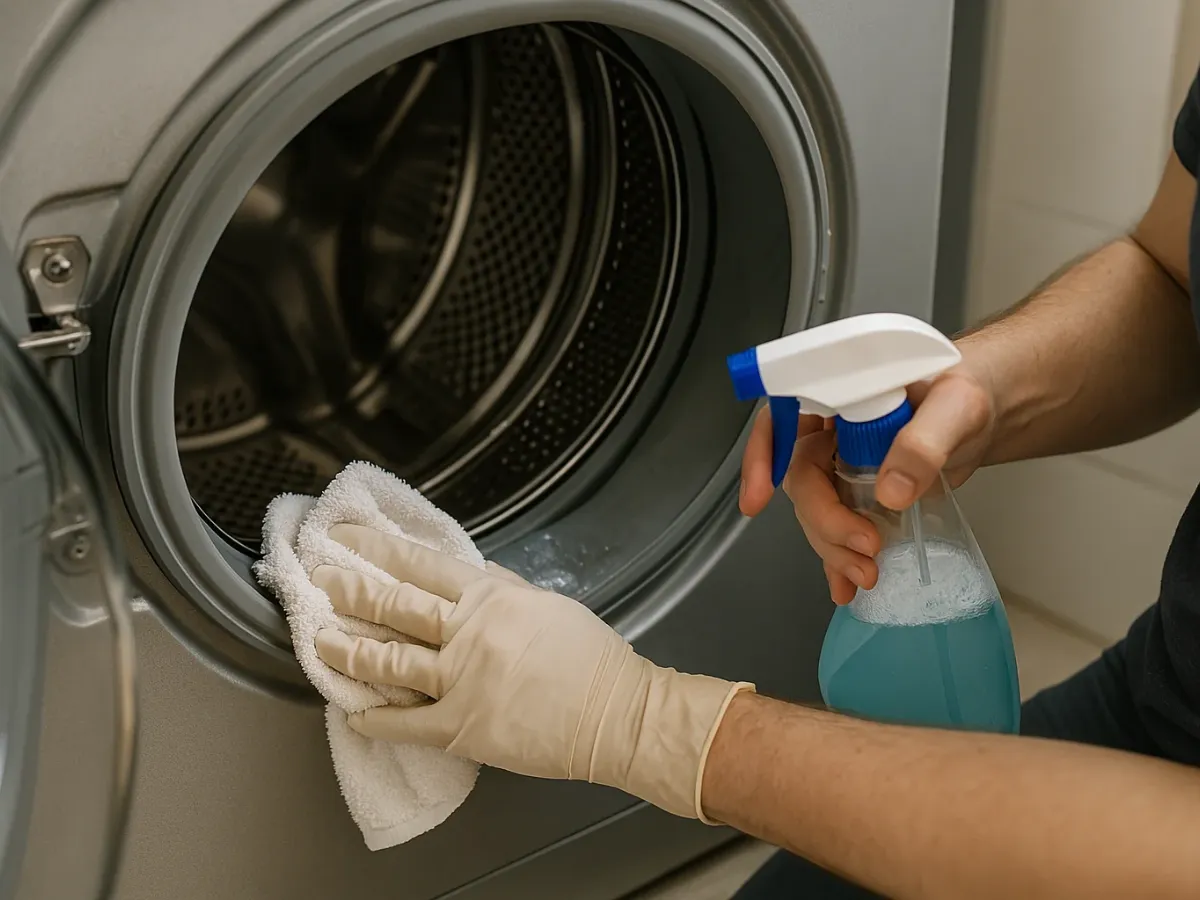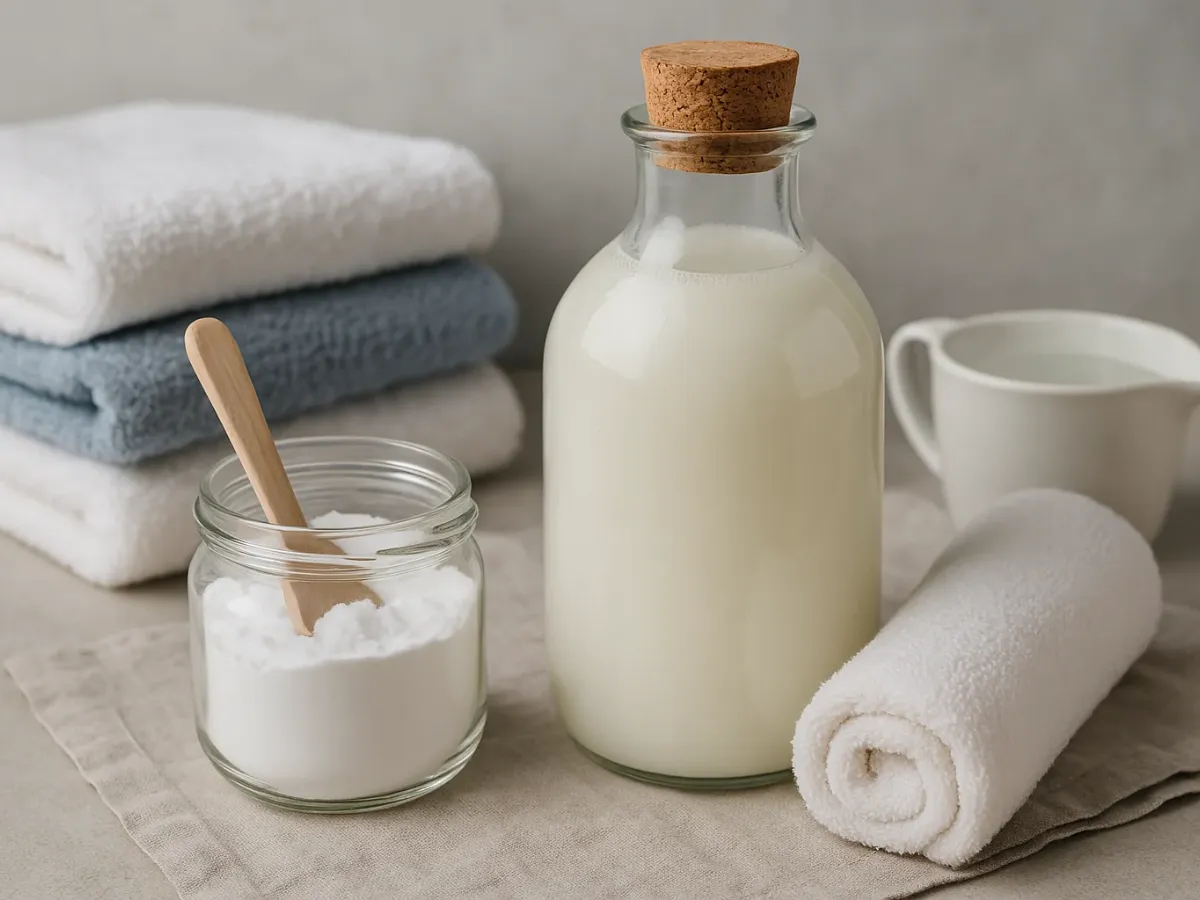How to Make Homemade Laundry Soap: Economical, Eco-Friendly, and Effective

In the search for more sustainable, economical, and natural alternatives for our homes, more and more people are wondering how to make laundry soap at home. Making your own detergent not only allows you to control the ingredients that come into contact with your clothes and skin but can also lead to considerable savings and a reduction in plastic waste. Plus, it's easier than you think!
If you're interested in reducing chemicals, saving money, or simply trying something new, this comprehensive guide will teach you step-by-step how to prepare different types of homemade laundry soap using simple and accessible ingredients. Discover recipes for liquid and powder detergent, and learn tricks to get your laundry clean and fresh naturally.
Why Make Your Own Laundry Soap?
The reasons to switch to homemade detergent are varied and appealing:
- Economical: Basic ingredients (bar soap, baking soda, washing soda) are usually very cheap and go a long way, significantly reducing spending on commercial detergents.
- Eco-Friendly: You reduce plastic container consumption and avoid releasing phosphates, optical brighteners, and other chemicals found in many industrial detergents into the water, which can be harmful to the environment.
- Hypoallergenic (Ingredient Control): By choosing the components yourself, you can opt for natural soaps and avoid perfumes or additives that might cause allergies or irritation on sensitive skin, like babies'. It's ideal if you're looking for options for washing baby clothes.
- Effective for Normal Dirt: For everyday laundry, homemade soap is usually perfectly effective.
- Versatile and Customizable: You can adjust recipes, add essential oils for scent, or incorporate extra ingredients like percarbonate to boost whitening.
Star Ingredients of Homemade Soap
Most recipes revolve around these basic components:
- Soap Base: The primary cleaning agent. Most common options are:
- Marseille or Castile Soap Bar: Traditional natural soaps, based on vegetable oils. You'll need to grate them finely.
- Soap Flakes: Basically, natural soap already grated or flaked, more convenient to use.
- Cleaning Boosters and Water Softeners:
- Baking Soda (Sodium Bicarbonate): Cleans, deodorizes, softens water, and helps regulate pH.
- Washing Soda (Sodium Carbonate): Not to be confused with caustic soda! It's a powerful cleaner and degreaser, more alkaline than baking soda. Softens hard water and improves soap efficiency. Handle with care (can irritate skin).
- Borax (Sodium Borate): Another mineral that boosts cleaning, whitens mildly, and has antifungal properties. Its use is controversial in some environmental circles due to potential impact and toxicity if ingested, though used traditionally.
- Water: Necessary for dissolving and mixing, especially in liquid recipes.
- Bleach (Optional for Whites):
- Sodium Percarbonate: An oxygen-based bleach, eco-friendly and very effective with warm/hot water to maintain and restore whiteness in clothes. Ideal for adding to powder recipes for whites.
- Essential Oils (Optional): To add a natural scent to your laundry (lavender, lemon, tea tree...). Added at the end.
- White Vinegar (Optional, for Rinse): Not mixed directly into the soap, but adding it to the fabric softener compartment helps remove soap residue and softens clothes. Learn how to make homemade softener.

Recipe 1: Homemade Liquid Laundry Soap (Easy and Versatile)
Ideal for beginners and for all types of clothes (white and colored).
Ingredients (Approx. 3-4 Liters / 1 Gallon):
- 100-150g (about 1-1.5 cups grated) Natural Bar Soap (Marseille, Castile...) finely grated, or the same amount in flakes.
- 100g (about 1/2 cup) Baking Soda.
- (Optional) 50-100g (about 1/4-1/2 cup) Washing Soda for extra cleaning power (wear gloves!).
- 1 Liter (about 4 cups) very hot water (almost boiling).
- 2-3 Liters (about 8-12 cups) cold or room temperature water.
- (Optional) 20-30 drops of your favorite Essential Oil.
Step-by-Step Preparation:
- Dissolve Soap: In a large pot (preferably not used for cooking), pour the 1 liter of very hot water and add the grated soap or flakes. Stir constantly over low heat until the soap is completely dissolved. Don't let it boil!
- Add Powders: Remove the pot from heat. Carefully (wear gloves if using washing soda), add the baking soda and washing soda (if using). Stir well until dissolved. The mixture might thicken slightly.
- Cool and Rest: Let the mixture cool completely. You can let it sit for several hours or even until the next day. You'll see it solidify or become very gelatinous.
- Add Cold Water and Blend: Once cool and solid/gelatinous, add 1 liter of cold water. Use an immersion blender (stick blender) to break up the mass and mix well until you achieve a smoother, more liquid consistency.
- Adjust Consistency: Gradually add the remaining cold water (1-2 more liters), blending, until you reach the desired consistency (similar to commercial liquid detergent, not too thick or too watery).
- Add Scent (Optional): If desired, add the essential oil drops now and mix well.
- Bottle and Label: Pour the liquid soap into clean bottles (reused detergent bottles work well). Label them clearly.
How to Use:
- Shake Before Use: It's normal for it to separate or thicken slightly over time. Shake the bottle well before each use.
- Dosage: Use approximately the same amount as you would a commercial liquid detergent (a capful or measuring cup, about 80-100 ml / 1/3-1/2 cup per full load). Adjust based on dirtiness and water hardness. Pour directly into the drum or the main detergent compartment (II).
Recipe 2: Homemade Powder Laundry Detergent (Ideal with Percarbonate for Whites)
Easy to make and store. You can add percarbonate for extra whitening power.
Ingredients (Approx. 1 Kg / 2.2 lbs):
- 250g (about 2.5 cups grated) Natural Bar Soap, grated VERY finely (almost powder). A food processor is helpful.
- 250g (about 1 cup + 2 tbsp) Baking Soda.
- 250g (about 1 cup) Washing Soda (wear gloves!).
- (Optional, for whites) 250g (about 1 cup) Sodium Percarbonate.
- (Optional) 20-30 drops Essential Oil.
Step-by-Step Preparation:
- Fine Grating of Soap: It's key for the soap to be as fine as possible so it dissolves well in the washer, especially in cold water. If using a hand grater, use the finest side. A food processor is ideal.
- Mix Powders: In a large, dry container, thoroughly mix all dry ingredients (grated soap, baking soda, washing soda, and percarbonate if using). Ensure the mixture is homogeneous. Wear a mask if creating a lot of dust.
- Add Scent (Optional): If using essential oil, add it now and mix very well again to distribute.
- Store: Keep the powder detergent in an airtight container, in a cool, dry place, out of reach of children and pets.
How to Use:
- Dosage: Use 2-3 tablespoons per full load (about 40-60 ml / 1/4 cup). Adjust as needed.
- Where to Put It: You can put it directly in the drum before adding clothes, or in the main detergent compartment (II). If you worry about it dissolving in very cold water, putting it in the drum is better.
- Ideal for Whites (with Percarbonate): The version with percarbonate is excellent for keeping white clothes bright.
Advanced & Eco Option: Soap from Used Oil (Saponification)
Making soap from scratch using used cooking oil is a fantastic way to recycle, but it's a more complex chemical process and potentially dangerous if proper precautions aren't taken, as it involves using caustic soda (sodium hydroxide), a very corrosive product.
This process is called cold process soap making. It requires calculating precise proportions of oil, water, and lye, using protective gear (goggles, gloves, mask), working in a ventilated area, and following a very strict procedure. The resulting soap needs a "curing" period of several weeks before it can be used.
We do not recommend this option for beginners or if you don't have prior soap-making experience. If interested, look for workshops or very detailed tutorials from reliable sources and always prioritize safety. The previous recipes based on pre-made soap are much safer and simpler.
Tips for Success and Potential Drawbacks
- Quality of Base Soap: Use a good quality natural soap, without synthetic perfumes or additives if you seek a hypoallergenic option.
- Complete Dissolution: Ensure the soap dissolves well (especially in the liquid recipe) to avoid residue.
- Hard Water: If you live in an area with very hard water, you might need to slightly increase the dosage or add a bit more washing soda to improve effectiveness.
- Potential Residue: Sometimes, especially with cold water or if too much soap is used, small residues might remain on dark clothes. A good rinse (or adding vinegar to the final rinse) usually solves this.
- Effectiveness on Tough Stains: Homemade soap is great for normal dirt but might not be as powerful as commercial detergents with enzymes for very specific stains (blood, grass...). Consider pretreating those stains first.
- Washing Machine Maintenance: Although generally not problematic, it's good practice to run periodic cleaning cycles on your washer (e.g., with vinegar) to prevent buildup. Check how to clean your washer regularly.
Frequently Asked Questions about Homemade Soap
How do I make liquid soap for washing clothes?
Dissolve grated natural soap in hot water, add baking soda (and optionally washing soda), cool, add more water, and blend to desired consistency.
What to do if I don't have laundry soap?
Emergency: a little mild liquid hand soap or shampoo (no conditioner), or just baking soda. Get proper detergent ASAP.
How to make a detergent for washing clothes?
You can make it liquid (grated soap base + baking soda + water) or powder (finely grated soap base + baking soda + washing soda).
What to put in the washing machine if I don't have soap?
For minimal cleaning, baking soda. For softening and deodorizing, vinegar in the rinse. Avoid dish soap.
Making your own laundry soap is an excellent way to move towards a more sustainable home and control what you use on your laundry. With simple ingredients and a little time, you can create an effective, economical detergent tailored to your needs. Go ahead and try it!
Prefer Professional Convenience? LaColada Awaits!
While making homemade soap is rewarding, we understand not everyone has the time or inclination. At LaColada Self-Service Laundry Ponferrada, we offer maximum convenience: state-of-the-art industrial washers and dryers with detergent, softener, and active oxygen automatically included in every wash. Professional results without complications, while caring for your clothes!
Discover the Ease of LaColada!
Sebastián R.
More than 10 years at the helm of Lacolada Lavanderia Autoserivico Ponferrada and repairing industrial and domestic machinery in my spare time. You won't find unverified theories from the internet here, just real solutions tested by someone who gets their hands dirty every day.
More Laundry Tricks

How to Clean the Washing Machine Rubber Seal (Mold & Dirt)
Remove mold and accumulated dirt from the door seal.

How to Make Homemade Fabric Softener (Natural & Economical)
Natural and effective alternatives to commercial softener.

How to Wash White Clothes in Washer Correctly
Tips to keep your white garments radiant.